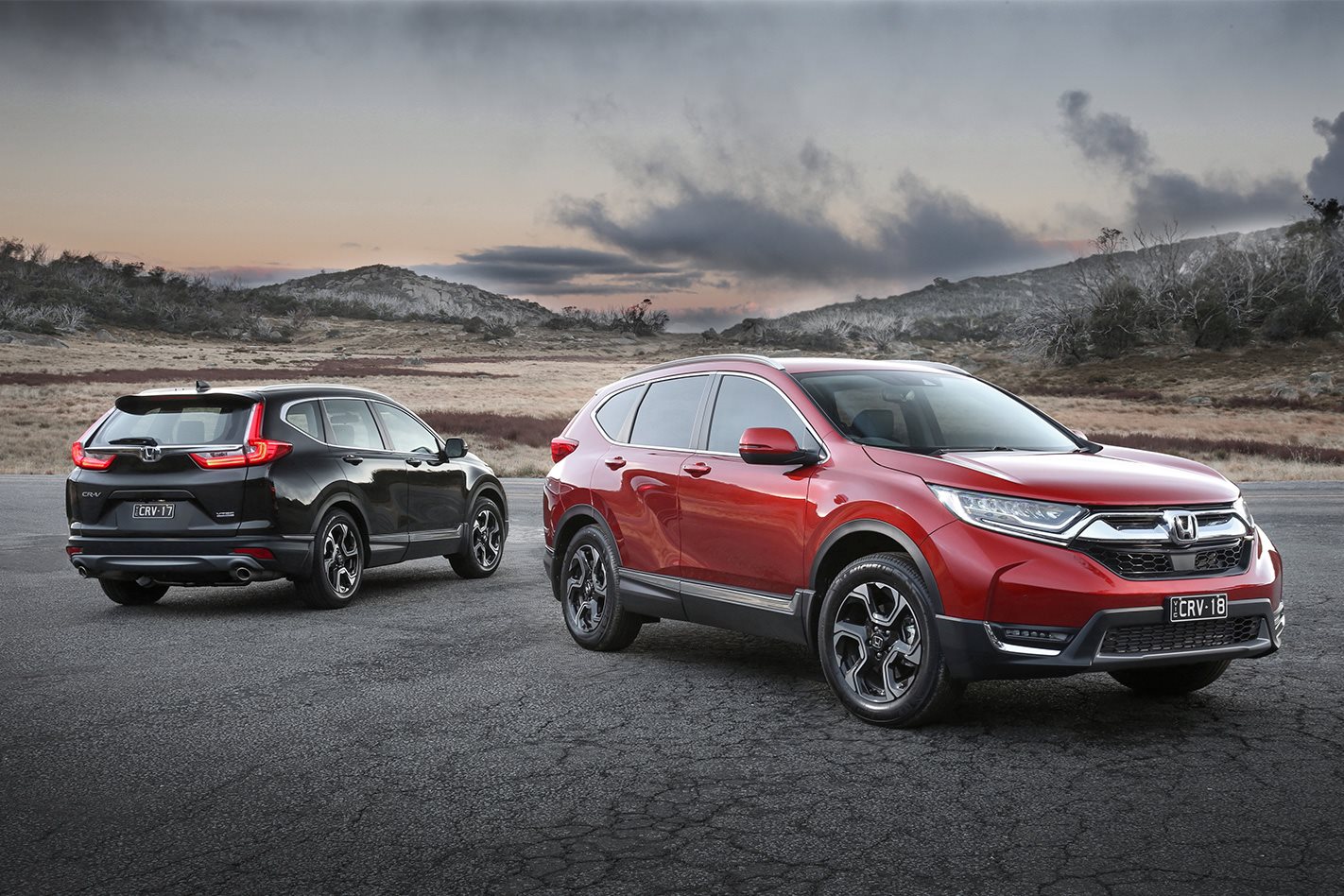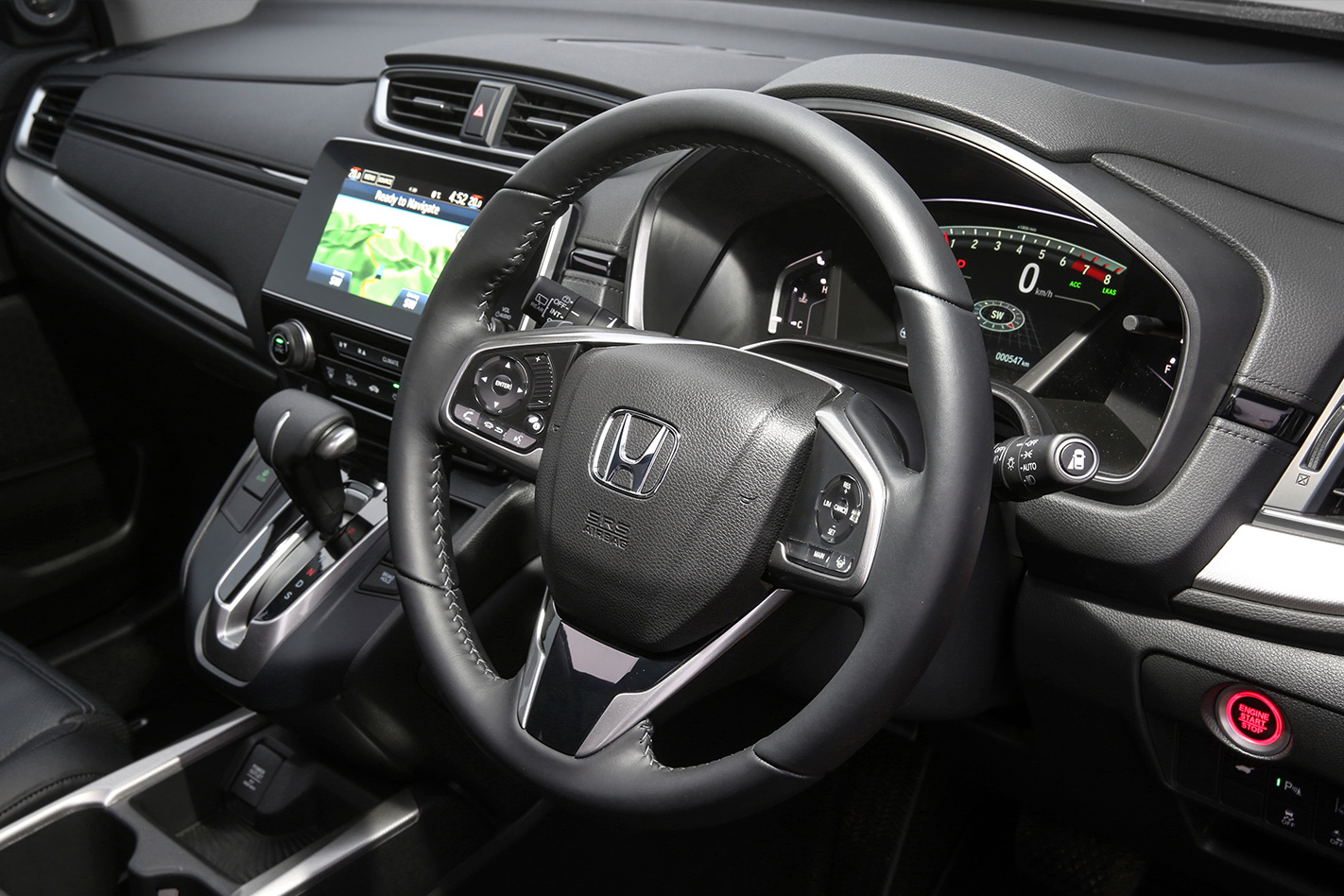
The fifth-generation Honda CR-V launches into one of Australia’s most contested and important vehicle segments, with mid-size SUV sales continuing to grow in popularity among Aussie motorists.
For that reason, it’s a vital vehicle for Honda Australia. Beyond the mechanical improvements that have come with the move to an all-turbocharged engine range and significant suspension and structural changes, the range itself has been bolstered by the arrival of a seven-seat option – a first in the CR-V’s history.
Want to know how the CR-V drives? Read our first drive report here. Just want to know which one to buy? Read on.

VARIANTS
First things first: all CR-V models are powered by the same 1.5-litre turbocharged petrol inline four, which produces 140kW and 240Nm, and all use a CVT automatic transmission. There’s no more manual-equipped base model, and no more diesel-engined option. That simplifies things somewhat.
As for the models themselves, the naming system should be familiar. The base CR-V VTi opens the range, followed by the VTi-S, VTi-L and VTi-LX grades.
The base model VTi opens with a $30,690 pricetag. That puts every CR-V variant above the $30k barrier for the first time, but that’s largely a consequence of the disappearance of a manual transmission from the range.

With keyless entry and ignition as standard, plus dual-zone climate control, a 7.0-inch colour infotainment display, an electronic parking brake and reversing camera as standard from the base model VTi, there’s plenty of equipment on offer, even considering the $30k pricing.
Move up to the VTi-S and the 17-inch wheels of the VTi make way for 18-inch alloys, while a power tailgate, front and rear parking sensors, dusk-sensing headlamps, a passenger-side external camera, built-in satellite navigation and the option of all-wheel drive make their way onto the spec sheet. The CR-V VTi-S costs $33,290 in 2WD form, and $35,490 with the AWD option.
The VTi-L grade sits one rung above, and is the only variant to come with seven seats. It also brings a panoramic glass sunroof, leather upholstery, heated front seats with power adjustment for the driver, rain-sensing wipers and a sliding second row. The CR-V VTi-L will set you back $38,990 before on-roads.

At the top of the tree is the VTi-LX, which reverts back to a five-seat layout yet adds features like autonomous emergency braking, active cruise control and lane monitoring, along with LED headlamps, a digital radio tuner, privacy glass and a self-dimming rear view mirror. The absence of a 2WD variant (the VTi-LX is strictly an AWD-only model) helps explain its high $44,290 retail sticker.
OUR PICK
The CR-V VTi-S represents the best value in the range.
Its shiny cloth upholstery may not be the nicest fabric around, but the balance of equipment for price makes the VTi-S the best buying in the CR-V family. Having key comfort and convenience features such as satellite navigation, a power-operated tailgate, front and rear parking sensors and Honda’s nifty Lanewatch camera means the VTi-S is more than a little bit easier to live with than the base CR-V VTi grade. The option to choose between 2WD and AWD means those who regularly venture away from sealed roads can select a more suitable driveline.

It’s worth pointing out that the CR-V range is a somewhat inconsistent one, though, what with a seven-seat configuration being limited to the fairly expensive VTi-L grade and AWD only being available on the VTi-S and VTi-LX, but not the intermediate VTi-L.
The lack of autonomous emergency braking on every model except the range-topping VTi-LX must also be pointed out, given the increasing availability of key safety technology in rival SUVs.
If a three-row layout is a non-negotiable for you, then your hand is forced into selecting the VTI-L. If safety is paramount and AEB is a core requirement, then the VTI-LX is the only one that’ll tick that box. If you need both of those features in the same car, then the CR-V simply can’t cater to that.



